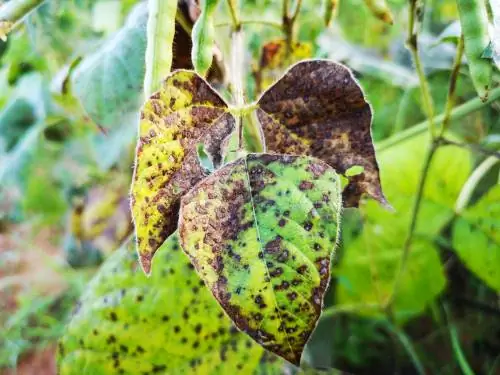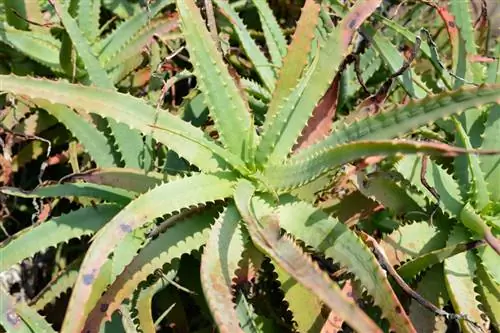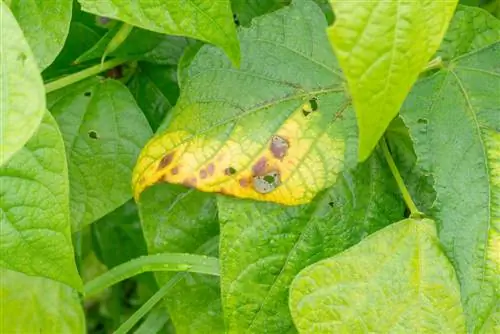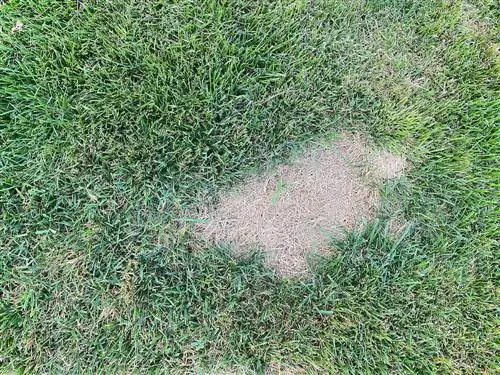- Author admin [email protected].
- Public 2023-12-16 16:46.
- Last modified 2025-01-23 11:21.
Brown spots on beans and bean plant leaves almost always indicate focal spot disease. This is a very aggressive fungal infection. Below you will find out how to act correctly in the event of an infestation.

What causes brown spots on beans and how to treat them?
Brown spots on beans and bean plant leaves usually indicate focal spot disease, an aggressive fungal infection. Affected plants should be removed immediately and disposed of with residual waste. Next year we recommend growing resistant varieties.
Which beans are affected?
Foot spot disease mainly affects bush beans and is rarely found on pole beans. As with all diseases, weakened plants are primarily affected. These circumstances promote the disease:
- wrong location, for example too dark
- incorrect watering (too much or too little water)
- Nutrient Deficiency
- already infected seeds
Detecting focal spot disease
Brown spots on the bean are usually an unmistakable sign of focal spot disease. But to be on the safe side that your beans are really affected by follicle disease (Colletotrichum lindemuthianum), take a close look at the brown spots. How to recognize the fungal infection:
- the spots originate from the leaf veins, but can also be found on the pods and stems
- the spots are initially only half a centimeter to one centimeter large
- the spots are brownish to reddish and have a dark colored edge
- they are often round and self-contained
- the plant parts have sunk in the affected area
How do you react correctly?
Focal spot disease cannot be treated. Therefore, in the event of an infestation, you only have one option: remove all infected plants immediately and dispose of them in the residual waste, under no circumstances in the compost! Under no circumstances should you sow seeds from infected plants, as they are very likely also infected and the disease would break out again.
The fungus is extremely resistant and can survive in the soil for up to two years. Therefore, you should definitely grow a resistant variety next year. However, the pathogen does not like strong heat, which is why treatment with hot water over 50° is possible. However, you should keep in mind that you will harm small animals and microorganisms in the soil.
It therefore makes sense to lay out a foil before removing the infected beans to ensure that no plant residue falls onto the ground and thus completely banish the pathogen from your garden bed.
Tip
The focal spot disease also affects peas. So check your pea plants for infestation and avoid sowing any peas in the appropriate spot next year.






